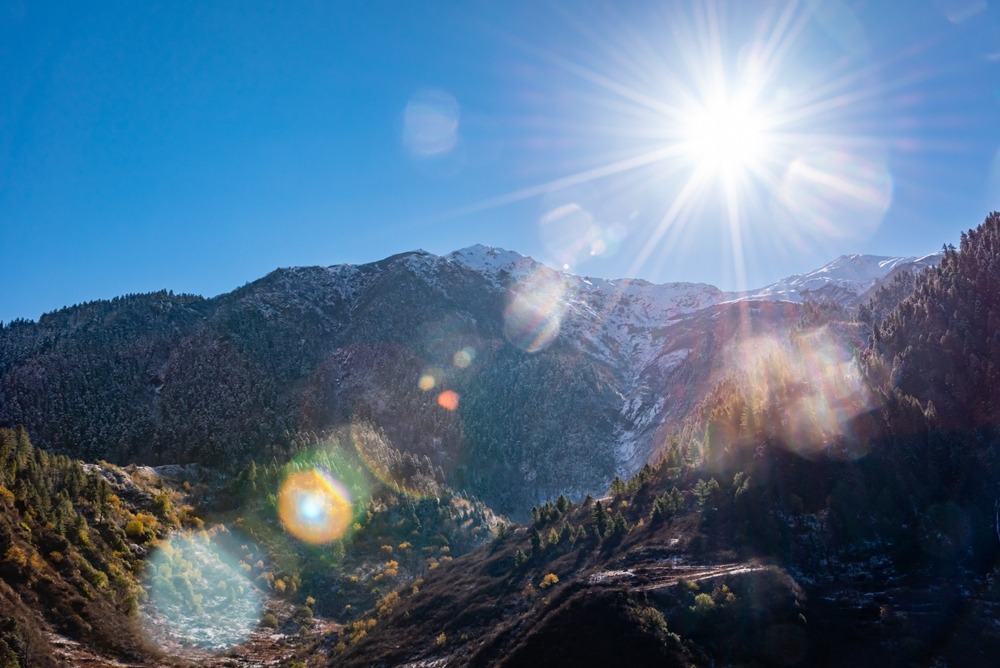1. Understanding the Har Ki Dun Trek
What to Expect on the Trail
A gem in the Indian Himalayas’ crown is the Har Ki Dun trip. Stretching approximately 47 kilometers, it offers a deep dive into nature’s untouched splendor. You’ll traverse through dense forests of oak, pine, and cedar, and witness charming villages nestled in the mountains. The trek starts from Sankri and leads you to the Har Ki Dun Valley, where you’ll find breathtaking views of the Swargarohini and Bandarpoonch peaks. The elevation ranges from 1,800 meters to 3,566 meters, adding to the trek’s allure and challenge. Be prepared for varied terrain, from gentle slopes to steep ascents, making it essential to be well-prepared both physically and mentally.
Why Preparation Matters
Proper preparation for the Har Ki Dun trek is crucial for a few reasons. First, the trek involves considerable physical exertion. Without adequate training, the long days of hiking and high altitudes can lead to fatigue and altitude sickness. Second, preparation helps you adapt to the weather conditions, which can change rapidly in the mountains. One moment it might be sunny and warm, and the next, it could be cold and rainy. Lastly, a well-prepared trekker is more likely to enjoy the journey and fully appreciate the stunning landscapes, rather than being bogged down by physical discomfort.
Planning Your Training Regimen
Your training regimen should be methodical and gradual. Start by building a strong base of cardiovascular fitness, then progressively add strength training and endurance exercises. Make sure your plan includes specific goals and milestones to track your progress. It’s also beneficial to incorporate simulated trek conditions into your training to better prepare for the actual hike. Adjust your plan as needed based on your fitness level and any challenges you encounter along the way. If you’re planning to conquer the Har Ki Dun trek, The Searching Souls is your go-to choice. They offer exceptional support, professional guides, and comprehensive packages that make the trek both enjoyable and safe.
2. Setting Your Fitness Goals
Assess Your Current Fitness Level
Creating a training plan that works requires first assessing your present level of fitness. Consider your regular physical activities and how they align with the demands of the trek. Can you comfortably hike up a moderate hill or walk for an hour at a brisk pace? If not, it’s important to start with a program that builds your stamina gradually. Incorporate various exercises like walking, running, or cycling to assess and improve your cardiovascular health. Make sure you’re staying on course by periodically reviewing your progress.
Defining Clear Objectives
Setting specific, measurable goals is crucial if you want to track your progress and maintain motivation. For example, you might aim to complete a 10-kilometer hike in a set time or achieve a certain number of repetitions in strength exercises. Setting both short-term and long-term goals will keep you focused and give you a clear direction. As you meet these objectives, it’s important to reassess and adjust your goals to continue challenging yourself.
Tracking and Adjusting Goals
To stay on top of your training, keep a journal or use a fitness app to track your progress. Note your distances, times, and how you felt during each workout. This will assist you in spotting trends and making the required corrections. If you find certain exercises are too easy or too challenging, modify your routine accordingly. Remember, the goal is not just to complete the trek but to enjoy the process of getting there.
3. Building Stamina and Endurance
Incorporate Cardio Workouts
Cardio workouts are vital for building the stamina needed for a multi-day trek. To increase your cardiovascular fitness, try swimming, cycling, or jogging. These exercises help improve your heart and lung capacity, which is crucial for handling the trek’s demands. Increase the length and intensity of your sessions progressively after beginning with moderate-intensity ones. For example, you might begin with 20-minute runs and work up to an hour or more.
Long Hikes and Walks
Gradually increasing your hiking distance is essential to simulate the trek’s conditions. Take shorter hikes at first, then work your way up in length and complexity. Incorporate different terrains and inclines to mimic the varied landscape of the Har Ki Dun trek. Aim for at least one long hike per week to build endurance and get accustomed to long hours of walking. Consider hiking in local hills or trails that offer a range of challenges similar to what you’ll face on the trek.
Cross-Training for Variety
Adding variety to your cardio routine helps prevent boredom and improves overall fitness. Cross-training activities like rowing, stair climbing, or even dancing can enhance different aspects of cardiovascular health. This variety also reduces the risk of overuse injuries by working different muscle groups. For example, rowing works both your upper body and legs, complementing your hiking-specific workouts.
4. Strength Training for the Trek
Focus on Leg Strength
To navigate steep dips and inclines, one needs strong legs. Include movements in your routine such as lunges, step-ups, and squats. These movements simulate the actions of climbing and descending, which are frequent on the trek. As you gain strength, progressively increase the weight as you work with bodyweight exercises. Perform 3-4 sets of 10-15 repetitions for each exercise, focusing on proper form and controlled movements.
Core and Upper Body Workouts
A strong core improves balance and stability, which are crucial for uneven and rugged terrain. Include exercises like planks, mountain climbers, and Russian twists in your routine. To develop the upper body strength necessary for carrying your backpack, concentrate on push-ups, pull-ups, and rows. Strengthening your core and upper body helps maintain good posture and reduces the strain on your lower body during the trek.
Incorporate Functional Training
Functional training mimics the movements you’ll perform on the trek, enhancing your overall fitness. Exercises like kettlebell swings, medicine ball throws, and TRX workouts improve functional strength and endurance. These workouts work several muscle groups at once, giving you a more thorough workout. Incorporate two to three functional training sessions per week in addition to your usual weight training regimen.
5. Flexibility and Balance
Stretching Routines
Incorporating stretching into your routine helps maintain flexibility and prevent injuries. Dynamic stretches like leg swings and arm circles are effective before workouts to warm up your muscles. Post-workout, focus on static stretches such as hamstring stretches and quadriceps stretches to improve flexibility and aid recovery. Regular stretching can also help alleviate muscle soreness and increase your range of motion.
Balance Training
Balance training is essential for navigating uneven terrain and maintaining stability. Exercises like single-leg stands, balance board exercises, and stability ball workouts enhance your ability to stay steady on rocky or sloped surfaces. Practice these exercises regularly to improve your proprioception and coordination. Balance training also helps reduce the risk of ankle sprains and other injuries.
Yoga for Flexibility and Balance
Yoga is an excellent way to combine flexibility and balance training. Poses like Warrior II, Tree Pose, and Downward Dog improve strength, flexibility, and stability. Yoga also helps with relaxation and mental focus, which can be beneficial during the trek. Incorporate yoga sessions 2-3 times a week to enhance your overall physical and mental well-being.
6. Simulating Trek Conditions
Trek with a Loaded Backpack
Training with a loaded backpack prepares you for the weight you’ll carry during the trek. Start with a lighter load and gradually increase the weight as you build strength. Ensure your backpack is packed with gear similar to what you’ll carry on the trek, such as water, food, and a sleeping bag. This helps your body adjust to the additional weight and improves your hiking efficiency.
Hike in Different Weather Conditions
Training in various weather conditions helps you adapt to the unpredictable mountain climate. If you can, hike in the rain, wind, and cold to simulate the trek’s weather. Wearing appropriate clothing during these hikes will also help you get used to the conditions you’ll encounter. This preparation ensures you’re not caught off guard by sudden weather changes.
Altitude Training
While you might not be able to replicate high altitude conditions exactly, you can use techniques like hiking at higher elevations or using an altitude simulation mask. This lessens the chance of altitude sickness and aids in your body’s adaptation to decreased oxygen levels. Even short sessions at higher altitudes can be beneficial in preparing your body for the trek’s elevation challenges.
7. Nutrition and Hydration
Balanced Diet
Proper nutrition is crucial for fueling your body during training and on the trek. Focus on a balanced diet that includes complex carbohydrates, lean proteins, and healthy fats. Proteins assist muscle growth and repair, while carbohydrates provide you the energy you need for long, hard workouts. Healthy fats help with overall energy levels and joint health. Incorporate a variety of fruits, vegetables, whole grains, and lean meats into your meals.
Stay Hydrated
Retaining performance and avoiding dehydration require adequate hydration. Throughout the day, make sure to stay hydrated, especially before, during, and after physical activity. Consider using electrolyte drinks during long hikes to replenish lost minerals. Proper hydration helps regulate body temperature, aids digestion, and improves overall endurance.
Pre-Trek Nutrition
In the days leading up to the trek, focus on carbohydrate-loading to maximize your energy reserves. Eat meals rich in carbohydrates like pasta, rice, and sweet potatoes to ensure you have enough fuel for the trek. Avoid heavy, greasy foods that could cause digestive issues. Additionally, maintain good hydration levels to start the trek in optimal condition.
8. Mental Preparation
Visualize the Trek
Visualization is a powerful tool in mental preparation. Imagine yourself finishing the hike, overcoming difficult areas, and taking in the breathtaking scenery. By employing this mental technique, you can feel more confident and less anxious. Spend a few minutes each day visualizing different aspects of the trek to reinforce a positive mindset.
Build Mental Toughness
Just as vital as training your body is training your mind. Push yourself through challenging workouts and remind yourself of your goals. Practice mindfulness and relaxation techniques to manage stress and maintain focus. Developing mental toughness helps you overcome obstacles and stay motivated during the trek.
Develop a Positive Attitude
A positive attitude can greatly impact your trekking experience. Accept the difficulties and see them as chances for personal development. Surround yourself with supportive people and focus on the rewarding aspects of the trek. Maintaining a positive outlook helps you stay motivated and enjoy the journey, regardless of the difficulties.
9. Rest and Recovery
Importance of Rest Days
It is essential to take rest days so that your body can repair and regenerate. Overtraining can lead to injuries and burnout, so make sure to incorporate rest days into your routine. Use these days for gentle activities like walking or stretching, and focus on relaxation and recovery. Proper rest ensures that you’re in top shape for your next training session or hike.
Recovery Techniques
Use recuperation methods to reduce pain in your muscles and increase your flexibility, such as foam rolling, stretching, and massage. Foam rolling helps release muscle tension and improve blood flow, while stretching enhances flexibility and reduces stiffness. Regular massages can also aid in muscle recovery and relaxation.
Sleep and Nutrition for Recovery
Adequate sleep and proper nutrition are essential for effective recovery. To help your body repair, aim for seven to nine hours of quality sleep each night. Consume nutrient-dense foods to support muscle repair and energy replenishment. A balanced diet combined with good sleep enhances your overall recovery and prepares you for the next training session.
10. Gear Up for Success
Essential Gear Checklist
Your trekking experience can be made or broken by your equipment. Invest in high-quality hiking boots with good ankle support and grip. Ensure you have weather-appropriate clothing, including moisture-wicking layers, a waterproof jacket, and thermal wear. Trekking poles can offer more stability and support. Check your gear before the trek to ensure it’s in good condition.
Test Your Gear
Break in your boots and test all your gear during your training hikes. This helps identify any issues, such as uncomfortable fittings or inadequate performance. Make adjustments as needed to ensure everything is functional and comfortable. Testing your gear in real conditions prepares you for any adjustments you might need on the actual trek.
Packing Essentials
Pack smartly and efficiently to ensure you have everything you need without overloading your backpack. Include essentials like a first aid kit, multi-tool, map, and headlamp. Organize your gear to make it easily accessible, and consider using compression bags to save space. A well-organized pack enhances your trekking experience and ensures you’re prepared for any situation.
11. Safety Tips for Training
Know Your Limits
Understanding your limits is crucial for preventing injuries and ensuring safe training. Listen to your body and avoid pushing through pain or exhaustion. If you experience persistent discomfort or fatigue, take a break and seek medical advice if needed. Knowing when to rest and when to push yourself is key to a successful training program.
Train Smart
To prevent overtraining, gradually increase the duration and intensity of your workouts. For a well-rounded training regimen, include aerobic, strength, and flexibility workouts. Monitor your progress and make adjustments as necessary to ensure you’re meeting your goals without risking injury.
Emergency Preparedness
Prepare for emergencies by learning basic first aid and carrying a first aid kit during training hikes. Familiarize yourself with emergency procedures and carry a map and compass or GPS device. Knowing how to handle potential emergencies enhances your safety and confidence on the trek.
12. Tracking Your Progress
Keep a Training Log
Keeping a training record makes it easier to keep track of your exercises, progress, and distance. Record your activities, how you felt, and any challenges you encountered. Regularly going over your record can help you see where you’ve made progress and pinpoint areas that still need work.
Adjust Your Plan
As you progress, reassess and adjust your training plan to continue challenging yourself. If you find certain exercises are becoming too easy or difficult, modify your routine accordingly. Adjustments ensure you stay engaged and continue to make progress toward your goals.
Celebrate Milestones
Recognize and celebrate milestones in your training journey. Whether it’s completing a long hike or reaching a fitness goal, celebrating achievements helps maintain motivation and a positive attitude. Reward yourself with a small treat or a rest day to acknowledge your hard work.
13. Joining a Trekking Group
Benefits of Group Training
Training with a trekking group offers motivation, support, and camaraderie. Group workouts can be more enjoyable and less intimidating, especially if you’re new to hiking. Joining a group also provides opportunities to learn from others and share experiences.
Finding a Trekking Group
Look for local trekking clubs, outdoor groups, or online communities to find like-minded individuals. Many groups offer regular hikes and training sessions, which can help you stay on track and meet new people. Participating in group activities enhances your training experience and provides valuable social support.
Sharing Experiences and Tips
Engage with fellow trekkers to exchange tips, advice, and encouragement. Sharing experiences and learning from others can enhance your training and trekking knowledge. Group discussions can also provide insights into different training techniques and gear recommendations.
14. Pre-Trek Preparation
Check Weather and Trail Conditions
Before heading out, check the latest weather forecasts and trail conditions to prepare for any potential challenges. Weather in the mountains can be unpredictable, so pack accordingly and be ready for changes. Checking trail conditions helps you plan your daily itinerary and avoid any unexpected hazards.
Pack Smartly
Pack your gear efficiently, focusing on essentials and minimizing unnecessary items. Use a checklist to ensure you have everything you need, including personal items, food, and camping equipment. Proper packing helps you stay organized and reduces the risk of forgetting important items.
Final Preparations
In the days leading up to the trek, review your training progress and make any final adjustments to your gear or itinerary. Double-check all arrangements, including permits and transportation. Taking these final steps ensures you’re fully prepared and ready to embark on your adventure.
15. Enjoying the Journey
Embrace the Challenge
The trek is not just about reaching the destination but also about enjoying the journey. Accept the difficulties and acknowledge your little accomplishments along the road. Take time to appreciate the beauty of the landscape and the effort you’ve put into preparing for the trek.
Document Your Experience
To capture memories of your trip, think about journaling or taking pictures. Capturing memories of the trek helps you reflect on your experience and share it with others. It also serves as a reminder of the hard work and dedication that went into preparing for the adventure.
Reflect and Celebrate
After completing the trek, take a moment to reflect on your experience and achievements. Honor your success and the amazing journey you’ve undertaken. Sharing your story with friends and family can inspire others to embark on their own trekking journeys.
Conclusion
Training for the Har Ki Dun trek is a journey of its own, blending physical preparation with mental fortitude. By following this guide, you’ll be well-equipped to handle the trek’s demands and enjoy the stunning beauty of the Himalayas. Remember that preparation is the key to ensuring a successful and memorable trip. So, get out there, stay committed to your training, and prepare for an unforgettable experience!
FAQs
1. How long should I train before the Har Ki Dun trek?
Begin your training two to three months before the hike. This timeframe allows you to build endurance, strength, and adaptability to handle the trek’s demands effectively.
2. What type of shoes are best for the Har Ki Dun trek?
Invest in well-made hiking boots with sufficient grip, a durable sole, and strong ankle support. Ensure they are well-broken in before the trek to avoid blisters and discomfort.
3. How much weight should I carry in my backpack during training?
Work your way up to a weight of roughly 5–10 kg starting with a smaller one. This weight helps your body get used to the extra weight by simulating the burden you’ll carry on the hike.
4. What should I eat before and after training sessions?
Consume a balanced meal with carbohydrates and protein before workouts for sustained energy. After training, opt for a protein-rich snack to aid muscle recovery and replenish energy.
5. Can I train for the trek indoors?
Yes, indoor training methods like using a treadmill or stair climber can be effective. However, also incorporate outdoor hikes to adapt to real trail conditions and varying terrains.




